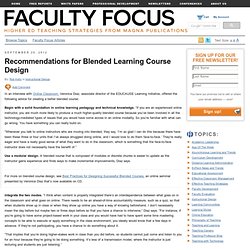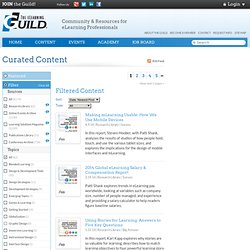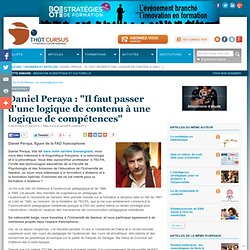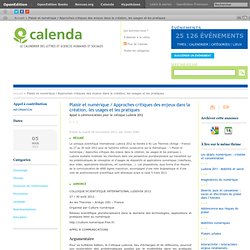

Theories – descriptive/prescriptive learning theories / instructional design theories. Today’s big idea is about theories – the different between descriptive theories and prescriptive theories and two specific types of theories: learning theories and instructional-design theories.

I began the day by reading about activity theory – a descriptive theory that was being used to describe some aspects of faculty development. Descriptive theories are concerned with providing a description of what people actually do. “Descriptive learning theories make statements about how learning occurs and devise models that can be used to explain and predict learning results.” (Ullrich, 2008, p.37). Activity theory provides a useful lens “to highlight problematic features of the learning and teaching setting” (Issroff & Scanlon, 2002, p.83). Communities of practice theory is interesting, in that it seems to want to cross the bridge between prescriptive and descriptive theory.
Recommendations for Blended Learning Course Design. September 20, 2012 By: Rob Kelly in Instructional Design In an interview with Online Classroom, Veronica Diaz, associate director of the EDUCAUSE Learning Initiative, offered the following advice for creating a better blended course: Begin with a solid foundation in online learning pedagogy and technical knowledge.

“If you are an experienced online instructor, you are much more likely to produce a much higher-quality blended course because you’ve been involved in all the technology-mediated types of issues that you would have come across in an online modality. So you’re familiar with what can go wrong. “Whenever you talk to online instructors who are moving into blended, they say, ‘I’m so glad I can do this because there have been these three or four units that I’ve always struggled doing online, and I would love to do them face-to-face.’ The Basics of Blended Learning. 10 principes pédagogiques à prendre en compte pour concevoir des environnements d’apprentissage multimédia. Behavior-centered Design at Google: A Case Study by Suz Burroughs & Sarah Devereaux.
“This approach provides our learners with customized, one-on-one support, while allowing us to measure the frequency and quality with which Google employees (“Googlers”) deploy methods covered in the training.”

If employees self-select to attend training, how can we make it compelling enough that they will want to participate and, better yet, share it with their peers? This year, we designed and developed a program for supplier managers, Googlers who partner with third parties to get work done. Studies show that once a partner signs a contract with Google there is significant value leakage in cost, quality, and ease. (See References at the end of this article for study citation.) Thoughtful performance management can help minimize this value leakage. There are thousands of supplier managers at Google, though this is not a primary job function for most of them.
We focused on proven tools and directional improvement in business outcomes. Techcon1.pdf (Objet application/pdf) Design Tools in Didactical Research: Instrumenting the Epistemological and Cognitive Aspects of the Design of Teaching Sequences. Abstract.

Theories – descriptive/prescriptive learning theories / instructional design theories. 2 - "Avec la FAD et les TICE, apprendre autre chose autrement" Best Free Podcasts. Why does information flow in networks? People like Barry Wellman and Caroline Haythornthwaite have contributed significantly to advancing the analysis of the impact of networks on society.

Well before Barabasi, Watts, and Strogatz arrived on the network scene, sociologists (and social psychologists) such as Granovetter, Wellman, and Milgram were developing models to understand how people connect. As a result of this work, terms like “six degrees” and “strong/weak ties” and “networked communities” have become mainstream. With an understanding of how people are connected we can also gain insight into how information flows through a network. I’m sure you’ve seen analysis of the social networks of board of directors at different companies. Valdis Krebs addresses this in Overlapping Networks: It is usually beneficial to be connected to those who have a good view of what is going on. Writing objectives. Behavior-centered Design at Google: A Case Study by Suz Burroughs & Sarah Devereaux. Research Library Contents: Page 1. Research Library Guild Research delivers four specific types of research reports whose single goal is helping you make sense of the depth of our field.

We work with great thinkers to analyze existing and new sources of knowledge and bring you concise reports that you can use to make important decisions, inform practice, and keep up-to-date. This is where you will find out about research in the field, new technologies, and what your peers are doing and thinking, in practical language. More Info > Distances et Savoirs Le design pédagogique et les modes d’interaction dans l’éducation à distance.
Instructional Design. Scaffolding helps to build a framework for the learners What is Instructional Design?

Instructional Design is defined as “a systematic process that is employed to develop education and training programs in a consistent and reliable fashion” (Reiser, Dempsey, 2007). In addition, it may be thought of as a framework for developing modules or lessons that (Merrill, Drake, Lacy, Pratt, 1996): 1 - "Il faut passer d'une logique de contenu à une logique de compétences" Recommander cette page à un(e) ami(e) Daniel Peraya, figure de la FAD francophone.

Peak Social. Is one of those lovely words that can be added to anything to make it better. Media? Nah. Social media. Learning? Nah. Le conseiller pédagogique réflexif. Transformer un organisme qui dispense des cours traditionnels en un organisme qui offre des cours à distance et en ligne n’est pas une entreprise de tout repos.

Il faut comprendre que l’on travaille avec des spécialistes de la matière qui ont, dans la plupart des cas, toujours présenté leur enseignement en mode présentiel, en salle de classe. Peu d’entre eux ont planifié leurs cours de façon systématique. Definitions of Instructional Design. Plaisir et numérique / Approches critiques des enjeux dans la création, les usages et les pratiques. 27 / 30 août 2012 Ax les Thermes – Ariège (09) – France Organisé par Culture numérique Réseau scientifique pluridisciplinaire dans le domaine des technologies, applications et pratiques liées au numérique.

Pour sa huitième édition, le Colloque Ludovia, lieu d’échanges et de réflexions, poursuit son exploration des problématiques posées par le multimédia dans les pratiques éducatives et/ou ludiques.
Théories de l'apprentissage.